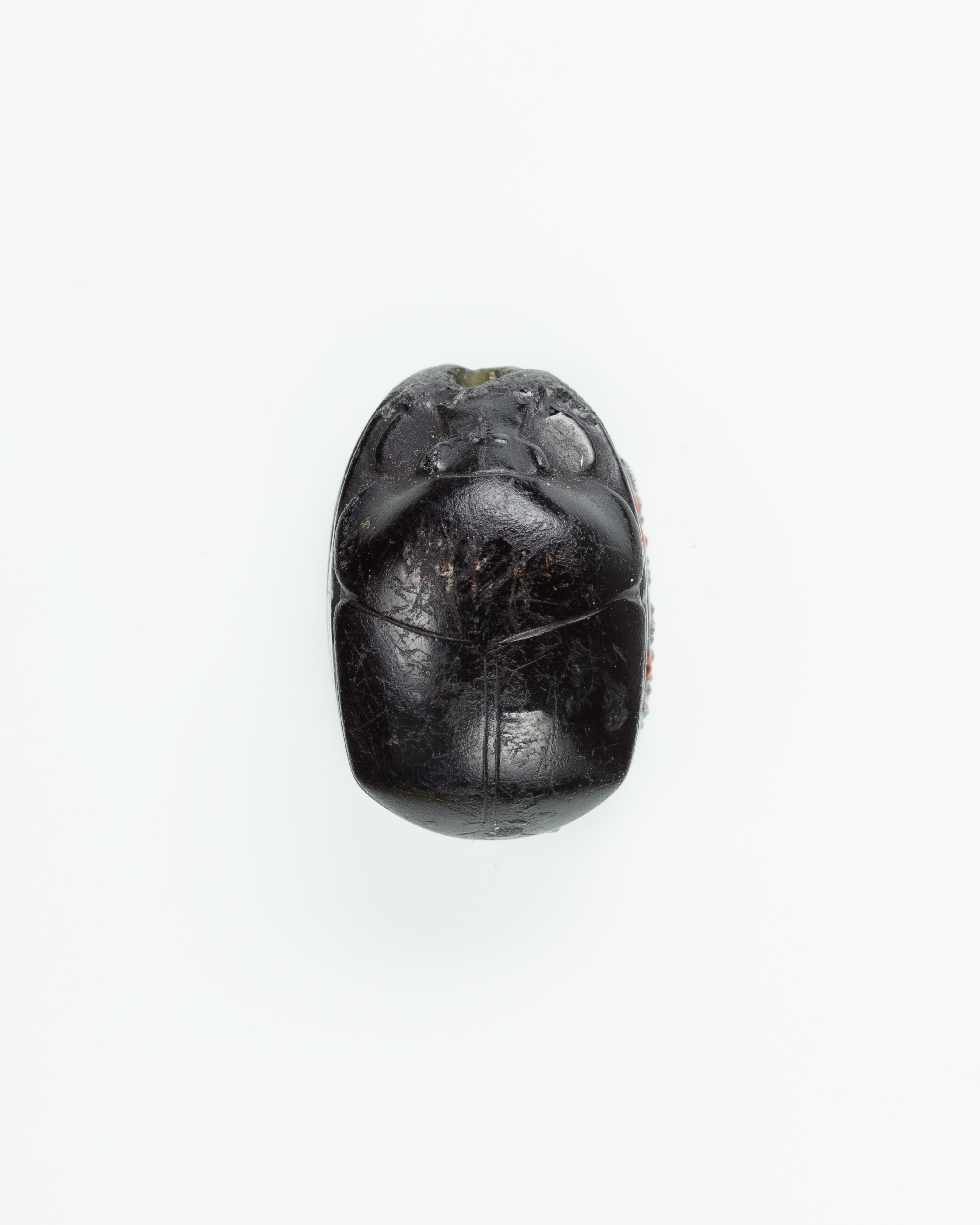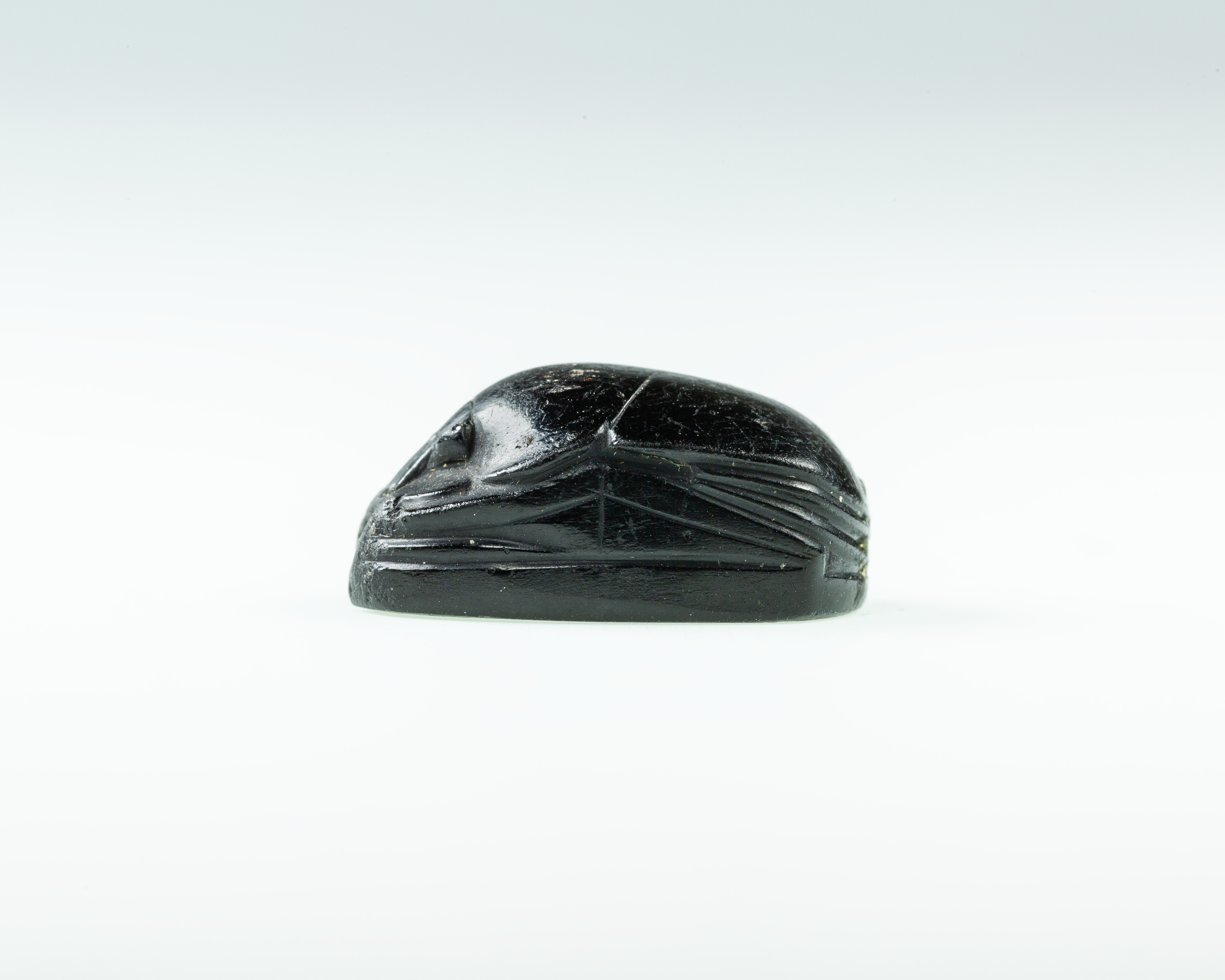Scarab of the Lady Mereret
Middle Kingdom
Administrative changes during Dynasty 12 lead to an increase in bureaucracy and, subsequently, in the production and use of seals. This is reflected in the beginning of the mass production of scarabs, the most popular shape for amulets, in late Dynasty 12 through Dynasty 13 (ca. 1850-1640 B.C.). Thousands of these late Middle Kingdom scarabs bear the names and titles of officials, who would wear them as amulets, but who could also use them to seal documents, containers or doors. However, the scarabs’ primary function remained that of a protective amulet. Several inscriptions add a funerary epithet to the owner’s name, indicating that the amulet was manufactured after the owner had passed away.
The name and title of a Lady of the House named Mereret, followed by a funerary epithet, are inscribed on the underside of this obsidian scarab.
Obsidian is not commonly used for the manufacture of scarab amulets because it is difficult to carve and fractures easily. Most known examples date to the Middle Kingdom.
Due to rights restrictions, this image cannot be enlarged, viewed at full screen, or downloaded.
This artwork is meant to be viewed from right to left. Scroll left to view more.





